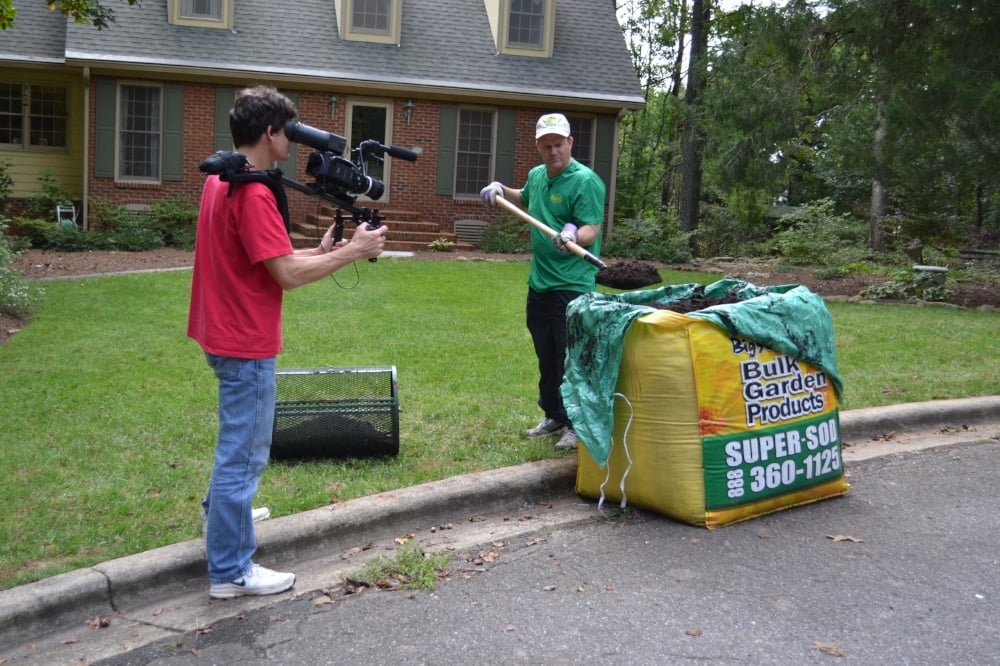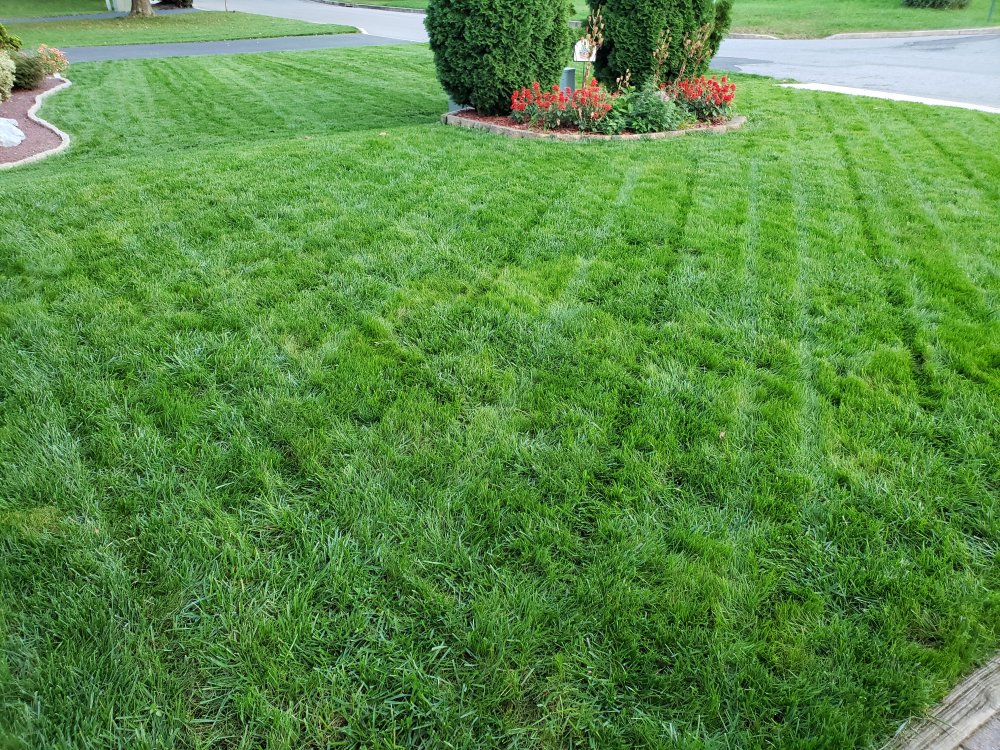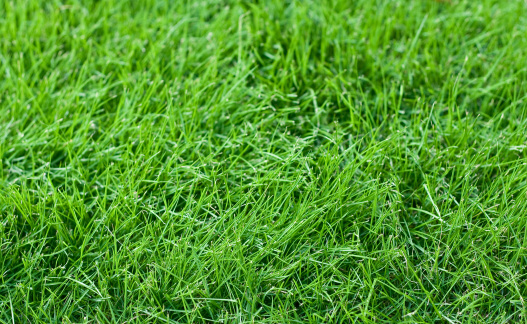To overseed tall fescue, first, mow your existing lawn to a height of about 2 inches. Then, spread the tall fescue seeds evenly over the soil.
Overseeding tall fescue can rejuvenate your lawn and improve its density. This process involves adding new seeds to an existing grass area, promoting healthy growth and resilience. Tall fescue thrives in various climates and offers a robust lawn that withstands drought and heavy foot traffic.

Credit: info.supersod.com
It’s essential to prepare the soil properly for optimal seed-to-soil contact. Timing your overseeding is crucial; early fall is often the best period. With the right techniques, you can create a lush and vibrant lawn that enhances your outdoor space. Follow these steps for a successful overseeding process and enjoy the benefits of a healthier lawn.
How to Overseed Tall Fescue : Step by Step Guide
Introduction To Overseeding Tall Fescue
Overseeding tall fescue helps improve lawn health. It fills in bare spots and enhances thickness. This process helps prevent weed growth and pest issues. A dense lawn can resist drought better than sparse grass.
The best time to overseed is during early fall. This season provides cooler temperatures and ample moisture. Spring overseeding can also work, but results may vary. It is crucial to choose the right timing for successful growth.
Preparing Your Lawn
Start by conducting a soil test. This helps to check pH and nutrient levels. Healthy soil encourages strong grass growth.
Next, mow your lawn to a shorter height. This allows sunlight to reach the soil. Remove any leaves or debris to keep the area clean.
Aerating the soil is also essential. Use a core aerator to create holes in the ground. This improves air circulation and water absorption.
After aeration, overseeding can begin. This process helps fill in bare spots and improves lawn density.
Choosing The Right Seed
Choosing the right tall fescue variety is key for successful overseeding. Some popular varieties include Kentucky 31, Fescue Max, and Rebel. Each has unique traits like drought resistance and disease tolerance.
Climate considerations play a major role in selecting the right seed. Tall fescue thrives in transition zones and areas with moderate temperatures. It grows well in sunny and partially shaded locations. Understanding your local climate helps ensure a lush lawn.
| Variety | Drought Resistance | Shade Tolerance |
|---|---|---|
| Kentucky 31 | High | Moderate |
| Fescue Max | Very High | High |
| Rebel | High | Low |
Seeding Techniques
Broadcasting is a common method for overseeding Tall Fescue. Spread seeds evenly over the area. This technique works best in spring or early fall. Use a broadcast spreader for better coverage.
Using a seeder can save time and effort. Choose a drop seeder for precise placement. Adjust the settings based on seed size. Follow the manufacturer’s instructions for best results.
Hand seeding can be effective for small areas. Use a handful of seeds at a time. Aim for even distribution while walking. Keep the seeds moist after planting.
Watering And Fertilizing
Watering is key for healthy tall fescue. A good schedule is important. Water deeply but less often. Aim for about 1 to 1.5 inches per week. Early morning is the best time for watering.
Choose the right fertilizer for your lawn. Nitrogen-rich fertilizers help growth. A balanced fertilizer is also good. Apply fertilizer every 6 to 8 weeks during the growing season. Always follow the instructions on the label.
| Fertilizer Type | Application Rate |
|---|---|
| Granular Fertilizer | 1 lb per 1000 sq ft |
| Liquid Fertilizer | 2-4 oz per gallon of water |
Post-overseeding Care
After overseeding tall fescue, proper care is essential. Begin with the first mowing when grass reaches about 3 inches tall. Mow to a height of 2 to 2.5 inches. This encourages healthy growth.
Weed control is crucial after overseeding. Use a selective herbicide that targets weeds without harming fescue. Apply herbicides carefully, following all instructions.
Thinning and filling gaps can improve lawn appearance. Identify any sparse areas and overseed them again. Keep the soil moist to help new seeds grow.
Common Mistakes To Avoid
Overwatering can drown grass roots. This leads to root rot. Water only when needed. Aim for deep watering instead of frequent light watering.
Neglecting soil pH affects grass growth. Test your soil regularly. Adjust pH levels with lime or sulfur as needed. Healthy soil helps tall fescue thrive.
Ignoring weather conditions can ruin your overseeding efforts. Always check the forecast. Overseed during the right season for best results. Cool temperatures are ideal for tall fescue.

Credit: www.grassdaddy.net
Measuring Success
Evaluating germination is crucial for a successful overseeding project. Check for even sprouting across the lawn. This indicates that seeds are taking root well. Count the number of seedlings in a specific area. A higher count shows better germination rates.
Lawn density and health matter for a lush green appearance. A dense lawn prevents weeds from growing. Regular watering and fertilizing help maintain a healthy lawn. Look for dark green color as a sign of good health.
Long-term maintenance ensures the lawn stays beautiful. Mow regularly but avoid cutting too short. This keeps the grass strong and healthy. A proper watering schedule is vital, especially in dry seasons. Aeration helps improve soil health and supports grass growth.

Credit: m.youtube.com
Frequently Asked Questions
How Do I Overseed Tall Fescue Grass?
To overseed tall fescue, begin by mowing the existing grass low. Rake the area to remove debris, creating good seed-to-soil contact. Spread the tall fescue seeds evenly, then lightly water the area. Keep the soil moist until the new grass establishes.
This process improves lawn density and health.
When Is The Best Time To Overseed Tall Fescue?
The ideal time to overseed tall fescue is during the early fall. This timing allows the seeds to germinate in cooler temperatures. Spring overseeding is also possible but can struggle with heat and competition from weeds. Proper timing ensures better growth and a healthier lawn overall.
What Tools Do I Need For Overseeding?
For overseeding tall fescue, you need a few essential tools. A lawn mower, rake, and broadcast spreader are crucial. Additionally, a soil aerator can improve seed-to-soil contact. Having a garden hose or sprinkler system helps maintain moisture. These tools make the overseeding process efficient and effective.
How Often Should I Water After Overseeding?
After overseeding tall fescue, water the area daily. Aim for light watering to keep the soil consistently moist. Avoid heavy watering, which can wash away seeds. Once the grass establishes, reduce watering to two or three times a week. This practice encourages deep root growth and drought resistance.
Conclusion
Overseeding tall fescue can transform your lawn into a lush, green oasis. Following the right steps ensures healthy growth and resilience. Regular maintenance, including watering and mowing, will keep your grass thriving. Embrace this simple process to enjoy a vibrant landscape that enhances your outdoor space for years to come.

